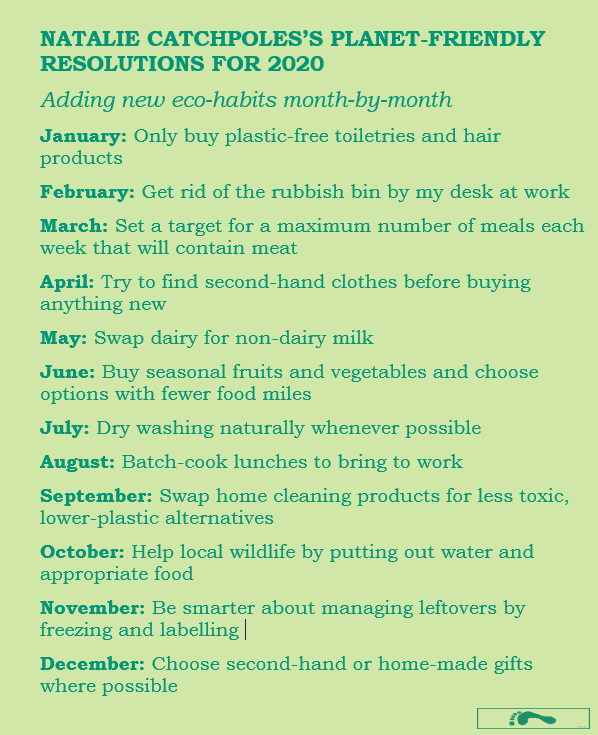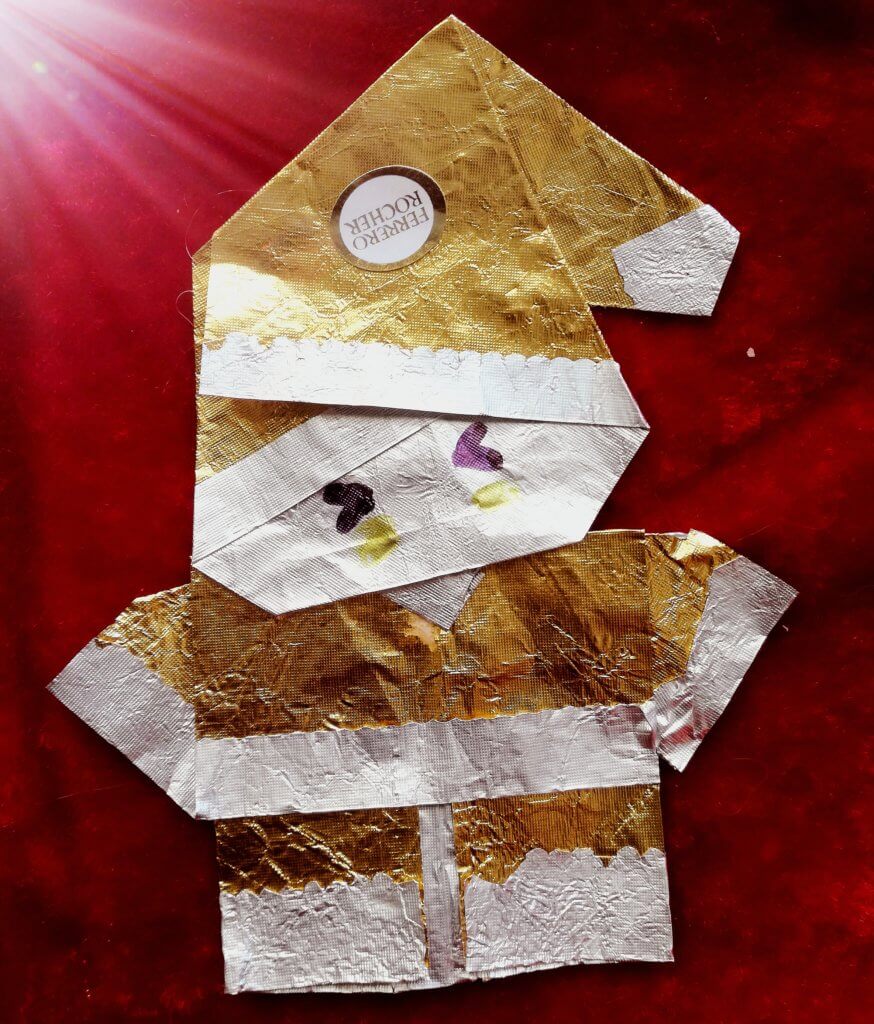Post-Christmas re-purposing of Ferrero Rocher wrappers
This stretch between Christmas and the New Year must be the weirdest week of the year. I don’t know whether to look back or forward, whether to eat thirds of pudding or chew a stick of celery, or whether I’m supposed to be working. There’s that nagging feeling that A New Me starts a bit too soon, and I could really do with a few more days cuddling up with the kids in front of a movie.
This year, rather than trot out my annual litany of self-help resolutions, I’m going green. Maybe you’re thinking along the same lines. But what to do? And how to do it?
We recently published a guest post from OUP’s Natalie Catchpole in which she suggests “making a plan to introduce one new thing each month…. twelve planet-friendly resolutions.” Makes sense; after all, small steps are easier than huge leaps, and according to Matt Cutts, ‘It turns out 30 days is just about the right amount of time to add a new habit or subtract a habit … from your life’. You can see Natalie’s resolutions for 2020 at the end of this post. But those are Natalie’s resolutions; what about mine? What about yours? What criteria can help us decide what to do, how and when?
So here are some frames of reference I’ve been using to help me make my Twelve Planet-Friendly Resolutions.
1. Get your priorities straight
What are the most important steps you can take to reduce your carbon footprint? I’ve largely cut out meat from my diet, so that’s a good start. But I use the car a lot when I don’t need to. Perhaps making more of an effort to cycle and use public transport is an action worth making sooner rather than later. OK, January’s goal is to fix my bike and get cycling more.
2. S.M.A.R.T. goals
A resolution is a goal, but how attainable is it? Is it …
- ‘S’ = Specific? I’m thinking about improving my family’s recycling, and while this is good in theory, what exactly am I planning to do?
- ‘M’ = Measurable? Will I know when I’ve achieved it?
- ‘A’ = Agreed? Have I discussed this with my partner, and does she agree it’s important?
- ‘R’ = Realistic? How doable or practical is it to do, bearing in mind my other commitments?
- ‘T’ = Time bound? When do I plan to have put it into practice? What’s my deadline to ensure I do it?
By asking these questions, you can define and refine each goal so that they are more likely to be met. Improved recycling is my February resolution, but I’m going to make it SMART to ensure it succeeds.
3. Levels of change
What level of environmental change do you want to work at? Based on Will Grant’s Four Levels of Change, we can group levels 1 & 2 (personal/ family/ friends & neighbours) and levels 3 & 4 (corporate/ institutional/ national). For example, I can do something about reducing my air miles. On a personal level I can decide not to attend my friend’s 50th in the UK and send a present instead, but on a professional one I’m contractually obliged to do talks for my publisher. However, via ELTfootprint and the platform I have within my industry I can try to change the culture within ELT to make it undesirable for my publisher to send me to distant conferences unnecessarily.
Peter Kalmus, author of Being the change: Live well and spark a climate revolution, says that the most important thing we can do right now is raise our voices to shift the culture as much as possible, so our resolutions should reflect this and include ways of getting the message across to other people.
4. To each a season
When in the year should your resolution come? Are there reasons to make a resolution at any particular times during the year? You might start cutting back on shopping waste during national “Say No To Plastics” week. If you decide to bring this initiative into your working life, too, then tying into a wider context such as a national day can help motivate students and colleagues, not just you.
There are also practical reasons to tackle issues at certain times. For instance, I’m acutely aware from the last few days’ festivities that a) the kids this Christmas received gifts from abroad via Amazon; b) we wrapped presents in paper spoiled for recycling because much of it was glossy paper and/or had lots of Sellotape on it; c) I over-consumed in general! So I’d like to green our Christmas in 2020, but November would be the month to do it, not December, which will probably be too late.
5. Focused or spread out?
Do you want to try to tackle one thing really well or cover a wide range of areas? You could plan your personal environmental change agenda on one matter of particular importance, e.g. household management, and work each month on different aspects; Natalie’s goals (below) are a good example of this. Or you could spread your efforts over several significant areas. For example, over the year you might consider doing something domestic, something online, something neighbourly, something for wildlife, something political, something….
And finally…
I’m looking forward to the support and collaboration of my family and friends, especially friends on ELTfootprint. We need like-minded people to support us in making changes – whatever they are. Friends create accountability on one hand, and the added motivation of a social group on the other.
What’s more, friends can help us learn. One thing that strikes me as I plan my year ahead is that a first step with most of my resolutions has to be to research what I need to know to do it right. What’s the best composter for our garden? Is recycling milk cartons time well spent? Before I switch to a dairy-free diet, are milk alternatives such as soya and nut milks any better for the planet? ELTfootprint is a fantastic resource because it’s a place to share practical knowledge and ask for help.
In comments here, and on Facebook, please feel free to tell us your green resolutions. I’ve still got a few months to fill, so I need some inspiration!


